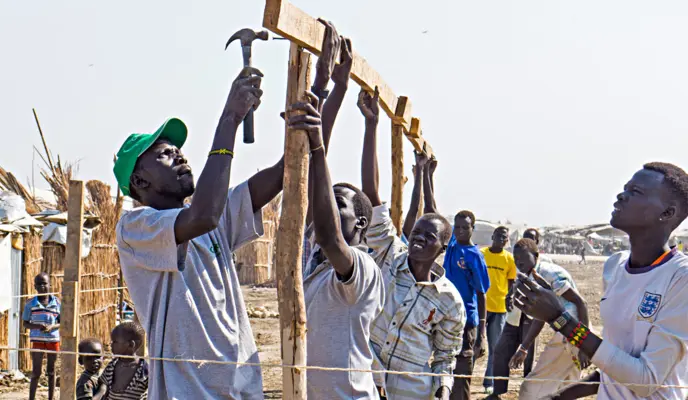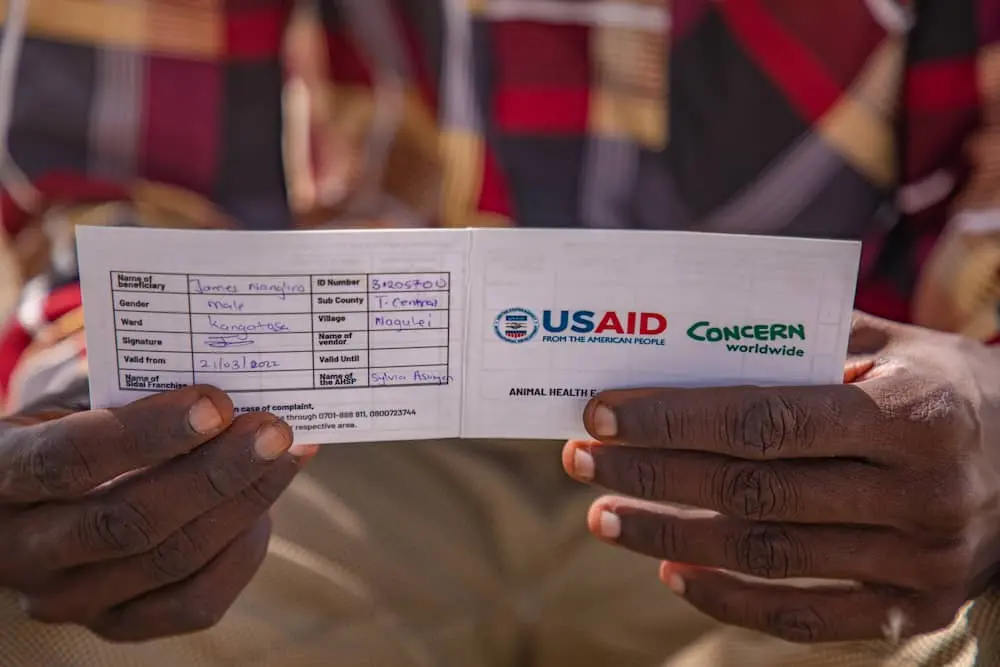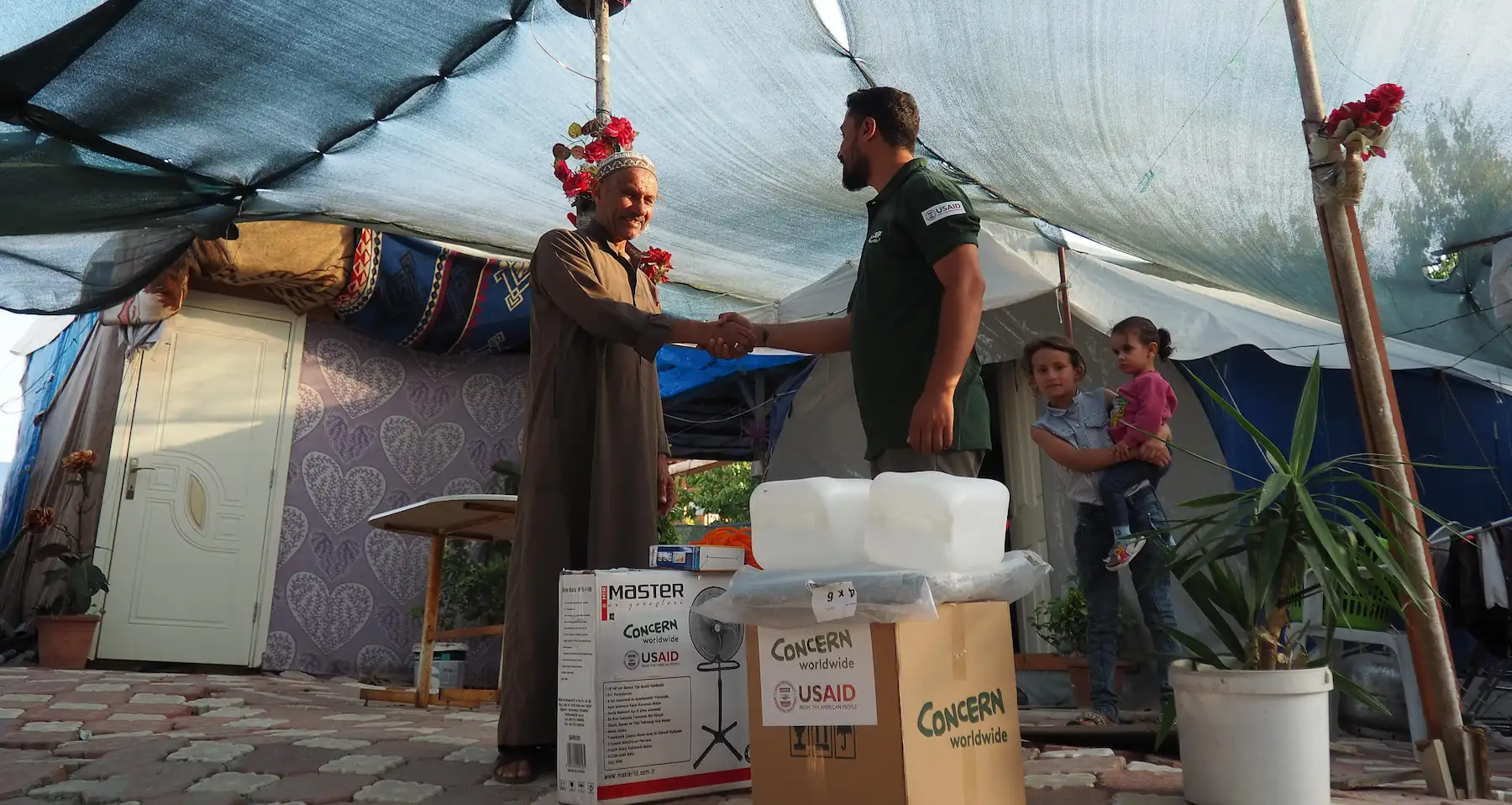News
Foreign aid, explained: 5 things you should know
What exactly is foreign aid and how does it work? Here's what you need to know.
Read MoreWhy should Americans stand up for foreign aid? It’s cheap, it’s effective, and it helps make the US safer and wealthier. But that’s just the start.
Foreign aid takes up a tiny fraction of the United States' national budget, but occupies a much larger percentage of news and debates. It's easy to get lost in the weeds with so many news stories and inside baseball, but on the other side of this topic are millions of lives that depend on foreign assistance. Here's an overview of the most common foreign aid myths — and some key facts that every American should know.
Let's get the big one out of the way first. In recent decades, the world has seen incredible improvements in health, education and economic well-being. Great strides have been made against malaria, polio, tuberculosis, and other curable diseases. Millions of people have financially empowered themselves through increased education, improved agriculture, micro-financing, and other sustainable solutions to poverty.
Fact: The United States is responsible for almost half of the funding that goes into fighting HIV and AIDS.
Many of these gains are thanks in great part to foreign aid (from the US among many other countries). Between 2000 and 2014, US foreign aid spending on child health saved the lives of 3.3 million children. These investments save lives.
Over the last 20 years, malaria diagnosis rates have been cut in half. So has child mortality: A 2017 Bill and Melinda Gates Foundation report suggested that the annual number of infant and child deaths has dropped over the last three decades from 11 million to 6 million.
Americans think we spend about 25% of the national budget on foreign aid. The number is closer to 1%.

Past research has shown that Americans think we spend about a quarter of the national budget on foreign aid. In reality, foreign aid spending is a drop in the budgetary bucket.
On average, foreign aid spending accounts for just over 1% of the federal budget each year — in 2017 (most recent complete data), it made up 1.2%. According to USAID, in that year, $47 billion was spent in total on foreign aid disbursements, which comes out to roughly $144 per American for the year. For reference, in the same year the average American spent more money on candy ($150) and tobacco ($332).
Fact: Americans spend more on candy every year than the US government spends on foreign aid.
Low-and-middle income countries represent some of the fastest growing markets in the world. A 2015 PricewaterhouseCoopers report projects that, by 2050, the countries with the fastest growing economies will be Nigeria (5.4% growth), Vietnam (5.3%), Bangladesh (5.1%), India (4.9%), Philippines (4.5%), Indonesia (4.3%), and Pakistan (4.3%). Another report from the WEF cites Ethiopia as the current fastest-growing economy in Africa.
Many of these countries currently receive bulk of the US's foreign aid budget, with Ethiopia and Nigeria both on the top 10 list for US spending in 2019. By helping people in these countries increase their own economic buying power, we can potentially increase our own domestic exports (and create more jobs here at home).

This is another common foreign aid myth. Foreign assistance funds don’t represent charitable contributions, nor can they be used as a “blank check” by foreign governments for whatever they want. Most of America’s economic foreign aid is disbursed through US-based agencies, like USAID. These agencies then allocate funding to a mix of nonprofits (like Concern Worldwide US) for key activities that directly benefit those most affected by crisis and emergency.
True, some foreign assistance funds go directly to foreign governments, but this — like all of the foreign aid budget — is earmarked for defined projects and sectors. For instance, USAID recently issued a payment to the Government of Pakistan, specifically to fund the Sindh Basic Education Program.
Foreign assistance spending is some of the most scrutinized spending in the federal government: The two top-ranked agencies in the Federal Invest in What Works Index are USAID and the Millennium Challenge Corporation (MCC).
What’s more, aid is a powerful bargaining chip for the United States. Organizations like USAID and MCC, keep close tabs on what is done with the money they deliver — and how effective that spending is. Agencies will also often negotiate aid contracts with governments in order to offset corruption or create systemic change to support improved social services and protections.

Foreign aid as we know it today may have come out of World War II, but wartime isn't the only time that the need for international assistance is high. Every President in recent memory has faced a pandemic outbreak — AIDS, SARS, H1N1, Ebola, and COVID-19. Overcoming these crises requires cooperation with other countries, and sharing resources and support.
Epidemics, economic stagnation, and climate change know no borders and can’t be addressed with military power. Slashing diplomacy and foreign aid will make it more difficult to overcome these global challenges.
“If you don’t fund the State Department fully, then I need to buy more ammunition.”—Former Secretary of Defense James Mattis
Military leaders are among the strongest advocates for non-military investments. Former Secretary of Defense James Mattis even once told Congress: “If you don’t fund the State Department fully, then I need to buy more ammunition.”
As noted above, foreign aid is a bargaining chip that enjoys bipartisan and multi-sector support. Small investments that enhance stability, self-sufficiency, and good governance around the world lessen the chances of costly US military interventions down the road.
Concern has as many as 20 programs that are funded by the US government — and many more have already been successfully completed. These projects take a variety of different forms:
We’re proud of the transformative impact we’ve been able to achieve with the help of humanitarian aid and development aid from the US government. Check out the below videos for some of those initiatives in action: